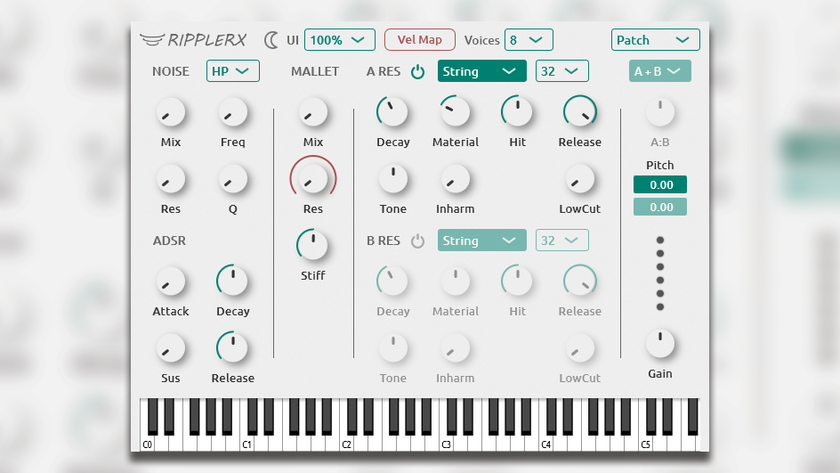The 40 greatest synth sounds of all time… ever!
Future Music's ultimate chart: read, listen and learn

Goldfrapp - Utopia
When our friends at Future Music magazine compiled a list of the 40 greatest synth sounds of all time in 2008, it was nothing if not controversial. Inevitably, some iconic tones failed to make the cut, but few would deny that the majority of the sounds that were included have attained classic status.
Now, for the first time, we can present the full list complete with analysis, audio and advice on how to go about replicating many of these sounds yourself. Read on, be inspired and then go and create a great patch of your own.First up: Goldfrapp's Mellotron classic, Utopia...
Our first sound is a much-loved preset. From the world’s first ‘sampler,’ no less. The Mellotron is all over rock classics from The Beatles to Bowie but we’ve selected a more recent (but definitely classic) airing to highlight one of the most used presets of all time.
Utopia features the Mellotron sound ‘Choir 3’ in the chorus section and outro of the song, and is a huge exciting feature of the track.
Listen: Goldfrapp - Utopia
How to get the sound
If you’re not in the mood for spending money, there are a few things you can try on your existing sample library to dirty them up, Mellotron style. Firstly, the Mellotron is a tinny yet powerful-sounding beast. EQ your choir parts to remove any frequencies below 200Hz and above 2kHz. Next, play your choir patch through a tape saturation plug-in, such as PSP’s VintageWarmer. Gently detune individual notes in your patch for that authentic (and awkward) mechanical sound.

Faithless - We Come One
The more famous Faithless sound has to be the ‘pluck’ from Insomnia (we’ll get to that…) but let’s not forget the awesome power of We Come One’s lead synth, giving Faithless an impressive two spots in our list.
Listen: Faithless - We Come One

Energy 52 - Cafe del Mar
This tune - first released in 1993 - was most successful when re-released in 1997 with a swathe of new remixes. Its sound and construction very much defined what was trance music at the time. In fact, the synth arpeggios went on to become what could be considered the ultimate cliché of the genre.
Interestingly, this riff has its origins in Belgian minimalism. The melodic hook is based on a piece by Wim Mertens (originally written in 1983). The distinctive elements of the sound are the plucked, almost harp-like attack, backed with a more traditional analogue-sounding body. The growth in the numbers of affordable digital synths in the 1990s, increased polyphony and multi-timbrality meant that layering of sounds was easy and very common.
Listen: Energy 52 - Cafe del Mar
How to get the sound
To achieve this sound we have taken Steinberg’s Monologue and mixed square wave and sawtooth oscillators running into a low-pass filter with cutoff down. The filter envelope has a fast attack and medium-fast decay in order achieve a synth ‘twang’.
This sound is then layered with a HALionOne artificial pizzicato sound. Combining the two and mixing with some generous reverb should result in a suitable and usable sound-alike.
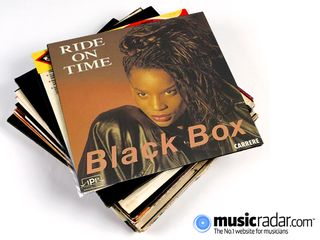
Black Box - Ride On Time
OK. We could have picked any late ’80s-early ’90s house anthem (try Starlight’s Numero Uno for even more pronounced evidence) but the house piano sound that defined the Italo house genre of the time definitely deserves a mention.
The ‘Piano 16’ and ‘Piano 8’ presets of the Korg M1 pretty much are the house piano sound. Both sounds are actually based on the same sample set, being essentially the same (thanks to the limited ROM memory of the Korg M1 keyboard). However, the subtle difference comes with the different filter curve on the ‘8’ preset. Need it soft? Go for the ‘8’. Need it harder? Go for the ‘16’ and whack every note at 127 velocity.
These days (and soon after the house explosion in the late ’80s) practically every synth has a bright, hard, almost fake-sounding piano preset, but back in the day, the only way to get the genuine article ‘plinky-plonk, dinky-donk’ sound of the Italian house tunes was to stump up for a Korg M1. You could pick one up for about £100 these days or check out the Korg Legacy Collection Digital Edition soft synth for a perfect recreation of the M1, with all its costly cards already on board.
Listen: Black Box - Ride On Time
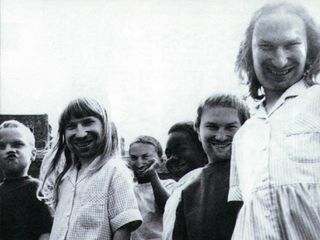
Aphex Twin - Come To Daddy
The first of the Aphex Twin sounds to make it into our list is this characteristic ‘warm Aphex fuzz’, which forms the acoustic cement between Richard D James’ slabs of sonic debris.
In isolation, it’s a heavily treated old string machine sound but in the context of tracks like Come To Daddy it’s the latent menace behind the beats.
Listen: Aphex Twin - Come To Daddy
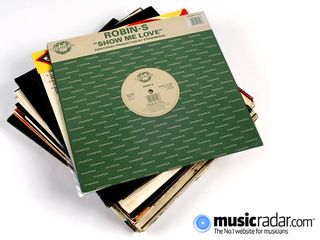
Robin S - Show Me Love
It shouldn’t work, but it does. When producer Stonebridge was looking for a bass sound for this house track he was idly flicking through the presets of his Korg M1 while the riff cycled through the notes. As soon as he hit on ‘Organ 1’, he knew he had it. It was an organ sound, sure, but by God, it sounded good playing the bassline.
The ‘organ for bass’ trend soon caught on in the scene (look out for tracks produced by House-master Steve ‘Silk’ Hurley for further evidence) and even tracks such as Gypsy Woman by Crystal Waters show that the combination of ‘Organ 1’ and DX bass is a killer combination for house.
Listen: Robin S - Show Me Love

Gary Numan - Are 'Friends' Electric?
We had to get some Numan in here didn’t we? And first up, we have this massively distinctive, sumptuously analogue and retro pad sound that is in every great early Numan track.
Listen: Gary Numan - Are ‘Friends’ Electric?

Europe - The Final Countdown
The Final Countdown is one of those power-rock tunes that could only have been released in the ’80s and everyone knows its distinctive synth brass riff.
Written by Joey Tempest, the song was conceived as an opening track for gigs (makes sense!) and a magazine interview with Mic Michaeli (Europe’s keyboard player) revealed that the sound was a combination of Roland JX8P and a Yamaha TX816 FM rack synth. And what a huge sound it is.
Listen: Europe - The Final Countdown
How to get the sound
To make this sound we again turned to the versatile Logic ES2. We used the Unison mode for maximum drama and combined three oscillators with detuning set a few octaves apart for thickness. Osc 1 uses a sawtooth, osc 2 uses a medium width pulse and osc 3 uses a synced square wave. We also employed the low-pass 18dB filter along with some FM modulation (set to half) and a combination of three envelopes to get the brassy attack to the sound.

Nelly Furtado - Maneater
Tim ‘Timbaland’ Mosley is, without question, one of the most in-demand pop producers in the world today. Rumours abound about the cost of a Timbaland backing track, but these have provided stellar success for artists like Justin Timberlake, Madonna and countless others.
His productions on Nelly Furtado’s Loose album changed her image from slightly left-of-centre folk-pop singer into full-on R&B phenomenon. Maneater sums up this transformation with a synth hook to die for.
Listen: Nelly Furtado - Maneater
How to get the sound
We’re using Logic’s ES2 and, while the Maneater riff is the ultimate slamming American production sound, there are real similarities with the European rave sounds from the ’90s.
With that in mind, we’ve made a three-oscillator sawtooth-wave sound with the first two oscillators detuned a little (+10 and -10 cents respectively) and the third detuned an octave. This gives a big fat raspy tone.
Then, we’ve used a 24dB per octave low-pass filter and, using the router, we’ve used Envelope 2 to open this a little at the start of the note to give a bit more bite. The key to this sound though, is in the generous amount of Glide, which lets one note slide into the next, and the Analog dial, which randomly outputs slight tuning discrepancies, as per classic synths of the ‘60s and ‘70s.

Usher - Yeah
Looking to build a smash hit? Program a simple, slow drum beat. Leave out the bassline and replace it with an occasional low rumble. Finally add a kazoo-like lead synth sound that’s nothing more than a preset called ‘U-Lead 1’, currently residing in Rob Papen’s Albino 3 soft synth.
Listen: Usher - Yeah
How to get the sound
Although Albino has a quality all of its own, this patch is simple to mimic. In your favourite soft synth, use one sawtooth oscillator and one square wave oscillator with a small amount of pulse width modulation, both set to the same pitch without detune. Open your low pass filter to almost completely open.
Here’s the clever bit - modulate the frequency of the sawtooth oscillator with a slow, gentle LFO. This introduces a nice cyclical detune effect. The masterstroke is then to patch an envelope generator to modulate the pitch of the oscillator with a quick (30-50ms) sweep down for each new note pressed. This gives the sound that distinctive kazoo-like character.
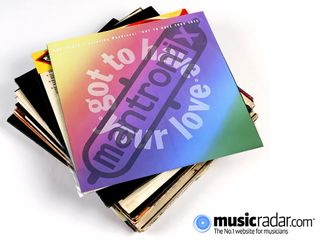
Mantronix - Got To Have Your Love
Combining pop, hip-hop and electro-funk, Mantronix was founded by DJ Kurtis Mantronik (not his real name!) in 1984. Got To Have Your Love hit number four in the UK charts in 1990 and is one of those tracks that everyone remembers simply for its classic bassline.
It’s a DX7 you’re listening to on the track but some subtle layering with an un-named analogue machine gives it extra depth and warmth.
Listen: Mantronix - Got To Have Your Love
How to get the sound
For this track we used the Logic EFM1 synth set to unison mode with a good dose of the sub oscillator in the mix for some heavy low end. Attack time is set to the fastest for maximum ‘snap’ at the start of the sound and we’ve also used a medium decay so the sound cuts off smoothly but not too abruptly.
Finally, we’ve applied the mod envelope to give subtle movement to the sound. Not snappy enough for you? Try more extreme settings to get that FM ‘thunk’ in there. Or layer up with a warmer analogue sound for increased depth.

Michael Jackson - The Way You Make Me Feel
Our first Michael Jackson classic, this one’s taken from the hit album Bad (1987) and produced by Quincy Jones. This album relied heavily on use of the New England Synclavier (which combined FM synthesis and sampling together in one box for the first time) along with other analogue synths - the bassline on this track is a combination of Synclavier with those other unlisted Jackson/Jones analogue synths.
Listen: Michael Jackson - The Way You Make Me Feel
How to get the sound
Recreating this sound proved challenging with one plug-in, but if there’s one Logic synth that’s up to the job, it’s the ES2 synth. For this sound we used a three oscillator mix, combining triangle and saw waves with medium resonance and low cutoff, some fine detuning between the oscillators for roundness and warmth, the additional sine oscillator for some added low end, a little distortion for some grit and a snappy envelope attack (on both the filter and amp envelope) for punch and snap. In a word, ‘he-heeeeee’!

Gary Numan - M.E.
The second entry for Numan. Let’s face it, he’s responsible for more than a few great moments in electronic music, with his ability to combine lyrical coolness, live performance and deliver a great synth hook when required. And, with the use of sampling, his back catalogue has been plundered for that elusive synth magic.
Basement Jaxx borrowed the fantastic big bass riff from Numan’s M.E. for their hit Where’s Your Head At.
Listen: Gary Numan - M.E.
How to get the sound
Our money’s on an ARP for this one, although Numan also used a Minimoog and Polymoog at the time. To recreate this sound we turned to the often-overlooked Steinberg Monologue.
The essential component here is the subtle phasing quality of the two oscillators ‘beating’ against each other as well as the use of Pulse Width Modulation (PWM). The Attack and Release are both quite fast, with Sustain on max. The filter should be fully open to allow all the higher harmonics to shine through. To add extra stereo width, some chorus has been added.
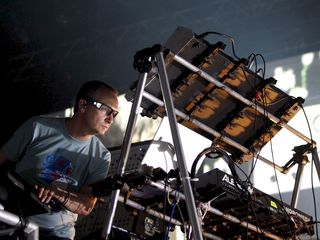
Orbital - Chime
While the main bass thud is a classic DX preset (see our entry for Madonna’s Express Yourself for details) we’re going to concentrate on the rippling, classic, squidgy 303 line. This one is a doddle, as long as you have a Roland TB-303 - but if you haven’t got a little silver box there is another option.
Listen: Orbital - Chime
How to get the sound
You can try this on any basic synth. Dial up a saw wave and set the filter cutoff to minimum and the resonance nice and high. Next, set the envelope modulation to maximum and the decay to minimum. This is what gives the tone that sharp percussive laser drop tone. Sweep the filter up a bit for a brighter tone.
You could also set the accent up to full as it makes a slight difference in quality to the notes with accent emphasis in the MIDI programming.
We love Audiorealism’s ABL 2 soft synth which is ideal for ripping this one off. You can set the accent in the ABL by programming higher velocity values for individual notes. Add some compression to make the bass more consistent in the mix. Perfect!
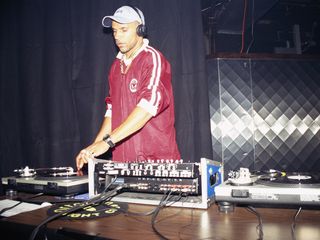
Goldie - Inner City Life
Think Timeless-era Goldie and your first memory would probably be of the classic breaks chopped and re-chopped to form the core of DnB’s breakthrough album. After that would probably come the haunting vocals of Diane Charlemagne. But don’t forget the incredible, discordant haunting synth pads that glue the beats and voices together.
Listen: Goldie - Inner City Life
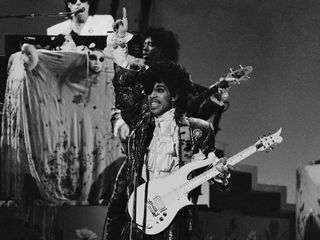
Prince - 1999
When Prince’s first major-label album For You was released in 1978, it was clear, despite the slightly underwhelming sales, that a serious musical talent had arrived on the scene. He wrote, produced and played almost everything on the record. However, it wasn’t until the arrival of the double-album 1999 in 1982 that Prince became a truly international mainstream artist.
The title track features most of the signature sounds and instruments that defined Prince productions during this important part of his career: LinnDrum, Oberheim synths, a string machine and tight funk bass and guitar. In fact, the combination of the ‘American-sounding’ Oberheim OB-8 and lustrous string machine is perhaps THE signature Prince keyboard sound of this era.
Listen: Prince - 1999
How to get the sound
Our first port of call when trying to recreate the main keyboard riff sound from 1999 was to use the trusty OP-X Pro VSTi (from SonicProjects) doubled with G-Force’s Virtual String Machine. This did give a fantastic sounding result, but we figured there must be a cheaper way to achieve the same thing.
Enter Falkelab Stringer, a simple but effective freeware string machine plug-in. We doubled-up two instances of the plug-in using different sample sets, but playing the same notes. The addition of some Cubase Phaser on one added just the right amount of movement.
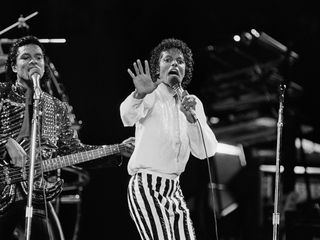
Michael Jackson - Billie Jean
Everyone knows the famous drum and bass intro to this track, but what about the synth chords? Suffice to say, it’s more than just a single synth sound going on here; it’s helped by an endless equipment list, which could only come with a huge ’80s production budget.
Our money is on a Jupiter-8, which was Greg Phillinganes’ polysynth of choice at this time, layered with E-MU Emulator vocal samples and then this layered up with the real orchestra directed by arranger Jerry Hey. Then this was all mixed down by Bruce Swedien and produced by Quincy Jones.
Listen: Michael Jackson - Billie Jean
How to get the sound
To recreate an approximation of this sound, we used the Logic Vocoder plug-in to emulate the polystring synth and vocoder ‘ooh’ sounds within one preset. To get this sound, set the wave balance at around the mid-way point and use the release control so the sound tails off with just a bit of release. Pretty simple really!
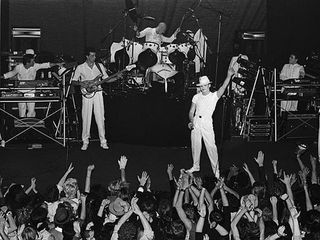
Gary Numan - Cars
The third (and final) showing for our Gary. Cars was a UK number one single for Numan in 1979. But that evocative lead sound that plays the long sustained notes? It’s the ‘Strings’ preset from a Polymoog.
The Polymoog was Moog’s first polyphonic synth; Gary had already brought the sound of the Minimoog to the top of the charts with his previous single Are ‘Friends’ Electric?. Time to air its younger, less-celebrated polyphonic sister for Cars, creating one of the most evocative synth parts we’ve ever heard.
Listen: Gary Numan - Cars
How to get the sound
This simple sound should be very easy to recreate, but there’s a problem. The original Polymoog was designed using the ‘divide down’ circuitry that was incorporated into home organs of the time, and exhibits the same drawbacks. Without getting too technical, this divide down technology is an electronic shortcut that gave home organs lots of polyphony but unfortunately has a thin ‘weedy’ sound, especially when compared to traditional analogue synths.
Modern soft synths avoid sounding weedy by design, so to get that thin Polymoog sound we’ll have to be clever. Use two sawtooth oscillators set to the same pitch but lightly detuned (5-10 cents between them). Use an attack envelope of around 50ms, and release of around 300ms to adjust the volume of the sound. Set the cutoff of your low-pass filter so the sound is bright but not too bright, with no resonance. To approximate the weediness of a Polymoog, gently filter out the lower frequencies in the sound with a high-pass filter - a 6dB/octave slope would be best at around 200Hz.
The finishing touch is gentle but fast (4Hz) frequency modulation to introduce vibrato to the sound. Don’t forget to add reverb too!

Josh Wink - Higher State Of Consciousness
There’s no synth that can quite recreate the crazy quirks of a real Roland TB-303 as used all over the ‘original tweakin’ acid edit’. But if you haven’t got a TB-303 to hand, for the closest emulation you can get, grab yourself a virtual version like the ABL Bassline or the Phoscyon from d16. That said, the 303 is simple one-oscillator synth with a choice of saw or square waves. The more harmonically rich square wave is the one to go for here. The rest is in the programming, making use of the accent and slide parameters in just the right places.
Listen: Josh Wink - Higher State Of Consciousness
How to get the sound
We’re going to use ABL Bassline. Keep the decay on full and envelope mod on midway. Start low and head high. Then, just when there’s nowhere left to go, go crazy and do it all again, but much faster this time.
The only other factor shaping the tone of the 303 is the distortion/overdrive effect. You could use anything for this trick, from a Boss turbo-overdrive, to overloading the input on an analogue desk. For those working in virtual studios, try simple guitar overdrive to get that thick growl. Finish off with plenty of heavy compression.

Daft Punk - Aerodynamic
Is it a guitar, is it a synth? On the record, it’s a Korg Trident played and resampled, in the process being passed through a batch of effects and processing to add the dirt that makes this sound famous.
Listen: Daft Punk - Aerodynamic

David Guetta vs The Egg - Love Don't Let Me Go
One of the defining moments in electro-house, this makes heavy use of a distinctive square wave lead sound that can be recreated on any three-oscillator mono synth.
Select square waves for the first two oscillators. Make sure they’re set to the same octave and dial the fine tune to -10 on one and +10 on the other. Mix them at equal volume. Next get a saw wave up on the third oscillator and set it to one octave below the other two, then adjust the volume level to about half. You should be well on the way.
Listen: David Guetta vs The Egg - Love Don’t Let Me Go
How to get the sound
We’re using Logic’s ES2 here. Select a 24dB low-pass filter with a hint of resonance. Put the cutoff to around 30% and set the filter envelope to half way. Set the ADSR to A=0, D=50%, S=0 and R=70%. Finally, set the Amp envelope to A=0, D=50%, S=100% and R=25%. Lastly, there are a couple of moments where the portamento/glide is used at quick settings.
The sound is pretty dry in the mix - there’s no noticeable reverb or delay to be heard so you might want to add a touch of drive, compression and ensemble chorus to finish it off. There’s also a second layer an octave down playing simple variations of the main riff. This is a simple saw wave but raise the low-pass filter up and down to create dynamics.

Darude - Sandstorm
A trance anthem that goes for the jugular and just hammers a screaming riff home for a good eight minutes. We’ve heard that this is a standard preset on the Access Virus, but if you haven’t got one handy, try using a soft synth with a dual filter structure such as Massive.
Listen: Darude - Sandstorm
How to get the sound
We’ve used two oscillators for this recreation. Start with a poly saw wave, or equivalent, and feed that into filter one. Select a band-pass filter and set the bandwidth to wide. This is the equivalent to a 12dB setting on a VA. Crank up the resonance quite high so it creates a nice overtone.
Now you need to set the cutoff so that it sits at a nice sympathetic harmonic and brings out the tone of the note. It’s easier to pick out the exact frequency with the help of some distortion in the effects chain, so insert one of those into the signal path. Finally, if you listen closely, there is also another small amount of FM style crunch in the mix, which helps sharpen it up. We’ve used the additive wave on oscillator two set to three octaves down, modulated with the Mod Oscillator set to 48 semitones. Route this to filter two set to low-pass and medium res and cutoff.

Van Halen - Jump
The keyboard riff from Van Halen’s Jump is a classic but the sound itself couldn’t be simpler. Although it definitely is ‘big’.
In order to find something that blended with their hard-rocking American sound, Van Halen turned to a manufacturer that, alongside Sequential Circuits, defined US polysynth design at the time - Oberheim. The Oberheim OB-Xa, alongside the rest of the ‘OB’ family, was an American classic within what was increasingly, at the time, becoming a market dominated by new, more affordable (and reliable) technology from Japan.
While not radical in analogue synth design terms, it offered a wide range of modulation options and most definitely has its own distinctive sound.
Listen: Van Halen - Jump
How to get the sound
We’re going to use Steinberg’s Prologue for this. The key to the sound is the fatness, warmth and richness so let’s turn all three oscillators to Saw and push the filter cutoff right up. They should all be detuned slightly against each other. We’ve set the third oscillator to play an octave higher (and a bit quieter). The Amp envelope should have a fast attack and swift release.
The final trick is to add some pitch and wave modulation to oscillator two, some chorus across the whole thing and a dash of reverb.

Phil Collins - Sussudio
Released in February 1985, Sussudio is the first track on Phil’s hit album No Jacket Required and reached number 1 on the US Billboard charts. Sussudio is a made up word that just worked in the context of the song, which sounds suspiciously like Prince’s 1999.
Those Prophet-5 synth chords are a dead giveaway but, after initially fearing cries of rip-off, producer Hugh Padgham put Collins’ worries to bed with an amazing bass sound for the track. Played on a Minimoog, the bassline is a funky affair that really drives the track along, working in perfect synergy with the Linn/Roland TR-909 drums. The bassline was sequenced on the Minimoog via a MIDI to CV box (to trigger the synth from whatever sequencer was being used) and gated from the drum machine to keep it super tight.
Listen: Phil Collins - Sussudio
How to get the sound
To recreate the Sussudio Minimoog sound in Logic, we used Logic’s very capable ESM monosynth plug-in using a 2-osc blend with medium cutoff and high resonance settings for that high-end squelch you can really hear on the record. We think this recreation gets pretty close!

Madonna - Express Yourself
Not the ‘live’ sounding album track but the house-styled single and video remix, which is a classic example of one of the most famous presets of the modern era.
The sound you’re hearing is ‘Solid Bass’ from the Yamaha DX21 and TX81Z rack synth. Another prime example where it’s left even higher and dryer is Chime by Orbital (already in our top 40 for its twittering 303 line). Saturday Night by Whigfield and Cheeky Song (Touch My Bum) by the Cheeky Girls are among many others that rely on this dull thud as the backbone to their groove.
Listen: Madonna - Express Yourself
How to get the sound
The ‘Solid Bass’ preset sound uses Yamaha’s FM synthesis. ‘Solid Bass’ is great on the dancefloor because it is essentially two FM sounds combined - one giving you the attack of the sound and the other adding the weight.
The first sound is one sine wave in a feedback loop giving it a little bite. The other sound is two operators linked together, the first modulating the second, each playing the same pitch but an octave lower. The bite component has a fast attack (3ms) and short decay, around 300ms. The weight component also has a fast attack but longer decay, so we have time to feel those low frequencies.

Zombie Nation - Kernkraft 400
The melody line for this Teutonic techno classic was ripped straight out of an old Commodore 64 computer game. This is the key to recreating the sound faithfully, as deep inside the Commodore 64 lurks a surprisingly powerful synth chip known as the SID.
Zombie Nation went as far as to use the Elektron SID Station synth - which uses the SID as its sound source - for the track.
Listen: Zombie Nation - Kernkraft 400
How to get the sound
We’re going to use Rob Papen’s Blue synth for this one. The lead line is a pretty straightforward saw wave through some echo and reverb, so you can recreate that easily enough. The pumping bassline which supports it uses oscillator detuning to get that ultra wide, dark and moody vibe to it. Take two saw waves and adjust the fine-tuning on each by a few cents in opposite directions. Then mix in one more saw wave an octave down from the other two.
Now, to get that lo-fi SID sound, we need to use a bit-crushing plug-in set to 8-bit, just like the SID chip itself. Add a little bit of overdrive to get the growl and some subtle dark reverb and you’re there.
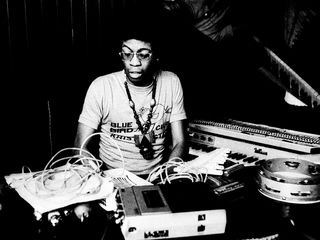
Herbie Hancock - Rockit
Rockit became a massive hit for the ever-innovating Herbie Hancock in 1983 for a number of key reasons (apart from it being a great tune).
Produced by Bill Laswell, it was one of the first commercial pop tracks to feature record scratching (by Grand Mixer DXT). This, in combination with a very cutting-edge MTV video (directed by Godley and Creme), greatly added to its commercial appeal and earned it five VMAs.
The synths Herbie used to play the Rockit main theme still remain a mystery to us but rumour has it that Herbie was using a Synclavier (FM plus samples plus synthesis), a Rhodes Chroma, a Fairlight, various Oberheim synths and a Prophet-5 around this time.
Listen: Herbie Hancock - Rockit
How to get the sound
To make the preset we’ve gone for Logic’s ES2, combining two medium-width pulse waves with a sawtooth wave (with detuning between the oscillators). We also added in some of the sine oscillator for added body, a bit of flanging and the fastest attack that was possible on the envelopes. All things considered, this gets pretty close to the sound on the record, but only Herbie has the recipe.

Aphex Twin - Windowlicker
It’s hard to narrow down the sound design work of this true genius - every sound he makes is custom built and practically impossible to identify - but we’ve isolated two sounds that are the closest you’ll get to an Aphex trademark.
The first is this treated Rhodes sound that forms the chords from Windowlicker. It’s chunky and it’s funky.
Listen: Aphex Twin - Windowlicker
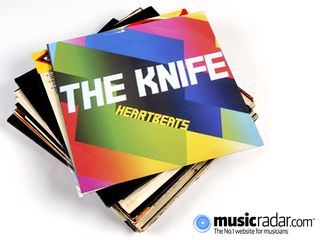
The Knife - Heartbeats
Scandinavian electro-pop siblings The Knife have a bit of a thing for retro ‘80s sounds. The Heartbeats bass is nice and thick and makes use of detuned square waves and oscillator sync.
Listen: The Knife - Heartbeats
How to get the sound
The ’80s era Pro-53 from NI has all the features we need for the job. Set Osc A to Square and ramp, and activate the sync. Set Osc B to square and detune it a bit. We’re going to use the filter envelope to modulate Osc A’s pitch a little bit. This will create that wide sound with slight harmonic overtones. In the poly-mod section, set the Filter envelope dial to half way, and the Osc B dial to 30%. Press the Freq A button to engage the mod.
Now we need to set the filter envelope ADSR to get the shape bending in an upwards direction. Set the ADSR to A=60%, D=75%, S=75% and R=50% and hit the Inv button. Select a LPF and lower the filter cutoff a bit to make the tone less bright. Add some overdrive and compression to the mix channel and play with the frequency dial of Osc A for more subtle variations.

Pendulum - Slam
Drum ’n’ bass meets rock, with a little bit of trance lead thrown in for good measure. This one can be made with virtually any two-oscillator analogue synth or virtual counterpart.
Dial up a saw wave on each oscillator and set them to the same octave. Next, adjust the fine-tune to -23 on the first oscillator and to +23 on the second. This should create a noticeable beating rhythm in the oscillators as a result of the detuning process. The more they are detuned, the faster the beating becomes.
Listen: Pendulum - Slam
How to get the sound
We’re completing our sound with the Logic ES2 here. Set the cutoff on the low-pass filter to a couple of notches below maximum and add about 1/4 of resonance. Set the filter envelope ADSR as follows: A=0, D=25%, S=0 and R=100%.
Turn up the modulation amount so that you can hear a bit of bite at the start of the sound, so that it cuts through the mix and has a little bit of bite. Set the Amp envelope to A=0, D=100%, S=100%, R=0. This gives the sound a fat, tight quality. A little bit of overdrive and compression will thicken it up some more, but don’t add too much so that it loses its clarity and becomes grungy,. You want to retain the clarity and punch.

Faithless - Insomnia
This classic, distinctive repeated plucked riff has to be on of the most memorable in dance music. The insistent repeated theme was much copied at the time and ultimately lead to that type of sound becoming a dance cliché.
Faithless remained masters of the big riff however, and Insomnia went on to become a crossover success in numerous countries around the globe. Fortunately, we have a unique insight into how this sound was created, as one of us worked with Faithless at the time the track was created.
The simple answer is this: Roland JD-990. The sound is a slightly edited variation of one of the presets based around a pizzicato string sample.
Listen: Faithless - Insomnia
How to get the sound
This sound is quite an easy one to recreate on any sample-based synth, as most have some form of pizzicato string sound. In fact, you will find almost identical samples in most Roland hardware boxes of the same era as the JD-990 (JV-1080 etc). In the virtual world you will need to dial through your preset library to find something with a nice plucked attack - for our purposes, we have used HALionOne in Cubase (having searched on ‘pizz’). Once selected the crucial addition is a smooth hall reverb placed generously across the track.
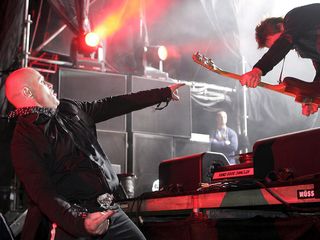
The Prodigy - Charly
The bendy riff in Charly IS the sound of rave. Variations of the bendy Juno sound also appeared on other seminal tracks including Human Resource’s Dominator and Mentasm.
The Charly sound is actually a combination of synthesis and re-sampling. The original sample was a combination of detuned Juno saw waves on one octave, layered with a noise/piano style stab at the beginning of the riff. Part of the character is that bending a sampled note sounds different to bending a synth sound.
Listen: The Prodigy - Charly
How to get the sound
Once you have made the single sustained note sample of the detuned saw waves - which we’re doing in Rob Papen’s Predator - stick a pair of them into a sampler and do a little more detuning. It should be starting to sound quite fat. Add a bit of overdrive and a very tight flanger (with low intensity) to get that nasty metallic shine. Finally, use a slap back 16th-note echo with all the bass taken out of it.

Roots Manuva - Witness (1 Hope)
UK-style wobble-zap bassline business. This one is a simple single oscillator jobby with lashings of dubby tape echo and spring reverb.
Start with a single square wave and crank up the resonance on a 24dB low-pass filter to a notch below self-oscillation. Lower the filter cutoff and set the filter envelope to around two-thirds to three quarters depending on your synth. Set the filter ADSR to A=40%, D=40%, S=0% and R=66%.
Listen: Roots Manuva - Witness (1 Hope)
How to get the sound
We’re putting Rob Papen’s Predator to task for this one. Set velocity to modulate the cutoff point at around 60% and draw in the three-note sequence. Make the first note have the highest velocity, the second note a bit less and the third note a bit less still. Complete the rest of the sequence with these velocity values so that it maps out the whole riff.
The last bit of filter modulation comes from the LFO. Set that to 1/16 BPM sync, and select a saw up waveform. Dial up a negative modulation value of around 50%, just until you hear the ‘whomp’ kick in.
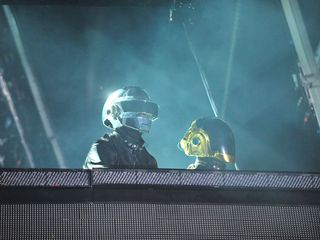
Daft Punk - Da Funk
This growling synth riff is the spawn of a devilishly overdriven Korg MS-20. You should choose your favourite synth and stack three saw waves at octave intervals. Mix it so that the middle octave is a bit lower in level than the others.
Set all the dials of the amp ADSR to maximum and set the filter ADSR as follows: A=25%, D=75%, S=30% and R=50%. Now set the LPF cutoff and res to around half way, this will vary a bit depending on the synth being used.
Listen: Daft Punk - Da Funk
We’re using NI’s Massive. The riff’s vocal-like quality is the result of crafty sequencing and filter envelope retriggering. You will need to set your synth to mono re-triggering so that it doesn’t re-trigger the filter envelope when the notes overlap. This is used during the shorter notes of the sequence. The longer notes need to be drawn in shorter than the length we hear them. The amp release will make them sustain longer, and the filter release will make the ‘wow’ sound as it trails.
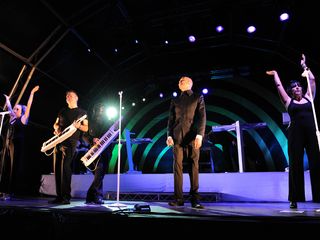
The Human League - Don't You Want Me
The Human League’s classic Don’t You Want Me might be seen by today’s youth as a quaint slice of ’80s electro-pop, but underneath the pulsing synth lines lies work of exceptional production mastery.
Martin Rushent - who produced the track along with it’s smash hit parent album Dare - pushed the band forward with his obsessive use of the legendary (and notoriously labour intensive) Roland MC-8 sequencer (an 8-track monophonic digital-analogue hybrid). The main synths used on the album were the polyphonic Roland JP-4, a selection of monosynths (including the Korg 770 and Yamaha CS-15) and a string machine.
According to Dare’s assistant engineer, most of the sounds were produced by careful and considerate layering of the limited resources available. And special mention to the LinnDrum LM-1 which provides every one of the albums brilliant (and still relevant) electro drum sounds.
Listen: The Human League - Don’t You Want Me
How to get the sound
To achieve the sound of the track’s great lead riff, we turned to the Korg Legacy PolySix, a VSTi interpretation of the early ’80s Korg keyboard of the same name. Its simple architecture is more than capable of conjuring-up some magic. For the patch we turned to a sawtooth wave, with a second saw wave an octave lower. The amp and filter share the same snappy envelope.
The key to this sound working is the Unison button. This doubles-up the sound with slightly detuned version of itself, with each panned in opposite directions. Add a touch of reverb and it’s job done.

Harold Faltermeyer - Axel F
Legend has it that Harold Faltermeyer used three synths to create this entire track: the Roland Jupiter-8, the JX-3P and a Yamaha DX7. Our guess is it’s the Jupiter-8 on lead duties here, with the DX7 chiming in with the bells and vibe sounds later on.
Rather than cheat and recreate the lead sound with a JP-8 emulation, we’re putting the massively versatile Massive to the test.
Listen: Harold Faltermeyer - Axel F
How to get the sound
Call up saw waves on oscillators one and two and detune the second oscillator by 10c. Add a bit of triangle wave on the third oscillator. Set the low-pass filter to 60% and dial in a smidge of resonance to brighten up the sound. Set the envelope ADSR to A=25%, D=60%, S=100%, R=25% and increase the modulation so it’s nice and brassy. Set the amp envelope to A=30%, D=60%, S=50%, R=25%.
If you listen closely to the intro, you can hear some white noise used behind the riff. You could add a bit to the lead line or run a separate track in sync. The rest of the sound is largely down to the Jupiter chorus effect - this can be recreated with any ‘ensemble’ style chorus.
Finally, add some quarter-note delay and filter out the low end and run that through some smooth ’80s reverb, such as a Lexicon, and you’re done.

Deadmau5 - Faxing Berlin
The Mau5’s productions tend to be derived from a broadly similar range of sounds and techniques. Most ideas are started in Fruity Loops, with mixing and additional production in an external DAW, but with the ability to run FL instruments as VSTis.
One Deadmau5 signature sound is the filtered synth chord that opens and closes throughout the track. Faxing Berlin shows it off.
Listen: Deadmau5 - Faxing Berlin
How to get the sound
At its heart lies a detuned sawtooth running into a low-pass filter with the envelope modulation set at fast attack and medium fast decay. We’ve opted to the use the freeware Juno-60-emulating VSTi TAL U-NO-62 for this one.
Due to its limitations, we’ve applied some pitch modulation from the LFO and a small amount of the Sub Osc, which adds a square wave tone one octave below. There is only one envelope and it controls both amplitude and filter cutoff. To open up the filter just push up the cutoff slider. The finishing touch is a bit of the onboard chorus effect and a sprinkling of warming reverb.
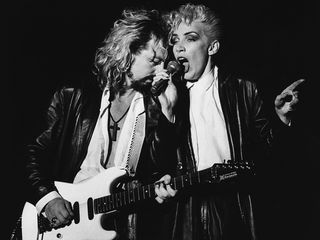
Eurythmics - Sweet Dreams (Are Made Of This)
A classic Brit Synth from ’82, and while it might sound like a standard analogue lead in isolation, as soon as you play that riff… So is it a bass, or is it a lead? Fact is it’s both.
Listen: Eurythmics - Sweet Dreams (Are Made Of This)

Donna Summer - I Feel Love
The Italian writer/producer and synthmeister Giorgio Moroder is perhaps most famous for his work on the 1977 Donna Summer single I Feel Love. The simple and highly infectious continuously repeating sequenced bassline set the scene for what was to come for the next 30 years.
To get his now-famous eight-note sequenced bass, Moroder used a massive Moog Modular synth system plugged into an eight-step analogue sequencer (lots of knobs and no storage) fed into a basic delay line set for a triplet repeat. Pressing a key on the keyboard with the sequencer running would allow simple transposition of the phrase, but not much else. Tonal variation came from real-time tweaking of synth parameters such as filter cutoff. The result is not only the sound, but the track’s hypnotic, tension-building melody too, which forced Summer to sing falsetto to keep up.
Listen: Donna Summer - I Feel Love
How to get the sound
To recreate this sound we’re using Steinberg’s Prologue synth set to fire on all three oscillators. Each is set to a sawtooth wave with slight detuning on each to give some fatness to the sound. The amplitude and filter envelopes are set for a fast attack and moderately swift decay in order to give punching presence to the bass pulse. The filter envelope is mapped to a 12dB low-pass filter. Its cutoff can be swept to give all-important movement to the sound.

Bodyrox feat Luciana - Yeah Yeah (D. Ramirez remix)
And so we reach number one in our line-up and it’s a unanimous decision. Yeah Yeah by Bodyrox contains a defining sound that has influenced dance music since 2006 and we’re certain that its enduring, unmistakable originality will continue to do so for years to come.
However, its genesis is a tortuous one. The sound in question was only present on a formerly obscure remix of what was at the time a little known club track. It could have melted away into obscurity but the bassline Dean Marriot (aka D. Ramirez) added to his mix was the key ingredient that the track lacked.
The band quickly realised the magic that Marriot had worked and transformed the track in a new radio mix based on his version, adding vocals from Luciana. The result was a smash, with the new mix enjoying global success and a top 10 chart placing. The new Yeah Yeah even earned Bodyrox an Ivor Novello Award nomination.
Thanks to all this visibility the bassline was quickly copied and has become a much-imitated sound in house music, its influence (and disturbing slippy-slidey portamento) still influencing anyone in search of a hit.
Listen: Bodyrox feat Luciana - Yeah Yeah (D. Ramirez remix)
How to get the sound
The Nord Lead 3 was D. Ramirez weapon of choice for this smash sound but any three-oscillator synth can do the job. The secret is three saw waves - the first two should be an octave apart for a nice thick sound. The third one should be four semitones below the lower oscillator creating a major third chord.
We’re going to recreate Ramirez’s sound using Rob Papen’s Blue. Both the amp and filter envelopes are constantly tweaked throughout providing plenty of movement and excitement as it goes from tight staccato stabs to gloriously-full open filter and amp release.
To get the sound at the beginning use a 24dB low-pass filter and lower the cutoff down to about 30%. Add a touch of resonance and dial up plenty of filter envelope modulation. Set the filter ADSR to A=0, D=50%, S=30%, R=60%. The amp envelope should be as follows: A=0, D=0, S=0 and R=30%. Finally set the portamento to be always on, with a short, constant, glide time.
There’s plenty of layering going on in the track as well. Check out the square wave bass which plays the same line. This is laced with reverb and chorus. And like the lead line, it modulates through the track. Genius.
Liked this? Now read: 15 ultimate synth icons

Future Music is the number one magazine for today's producers. Packed with technique and technology we'll help you make great new music. All-access artist interviews, in-depth gear reviews, essential production tutorials and much more. Every marvellous monthly edition features reliable reviews of the latest and greatest hardware and software technology and techniques, unparalleled advice, in-depth interviews, sensational free samples and so much more to improve the experience and outcome of your music-making.


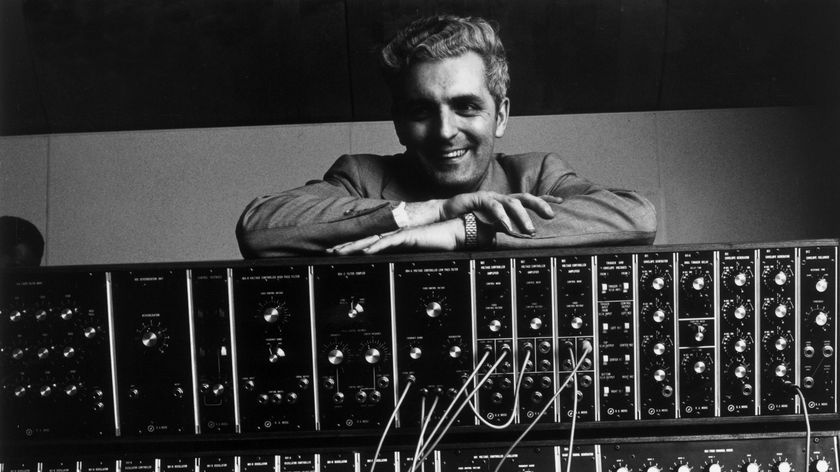
"The next generation of Moog products will push boundaries while remaining deeply rooted in the craftsmanship and creativity that defines the brand": Moog at 60, from the ladder filter to the Labyrinth
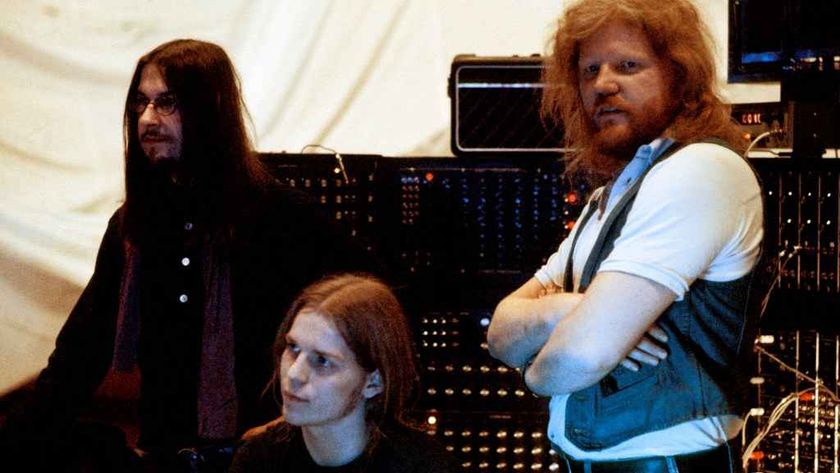
50 years of Phaedra: Tangerine Dream’s forward-thinking, futurist, synth classic is now an antique

"The next generation of Moog products will push boundaries while remaining deeply rooted in the craftsmanship and creativity that defines the brand": Moog at 60, from the ladder filter to the Labyrinth

50 years of Phaedra: Tangerine Dream’s forward-thinking, futurist, synth classic is now an antique
Most Popular







